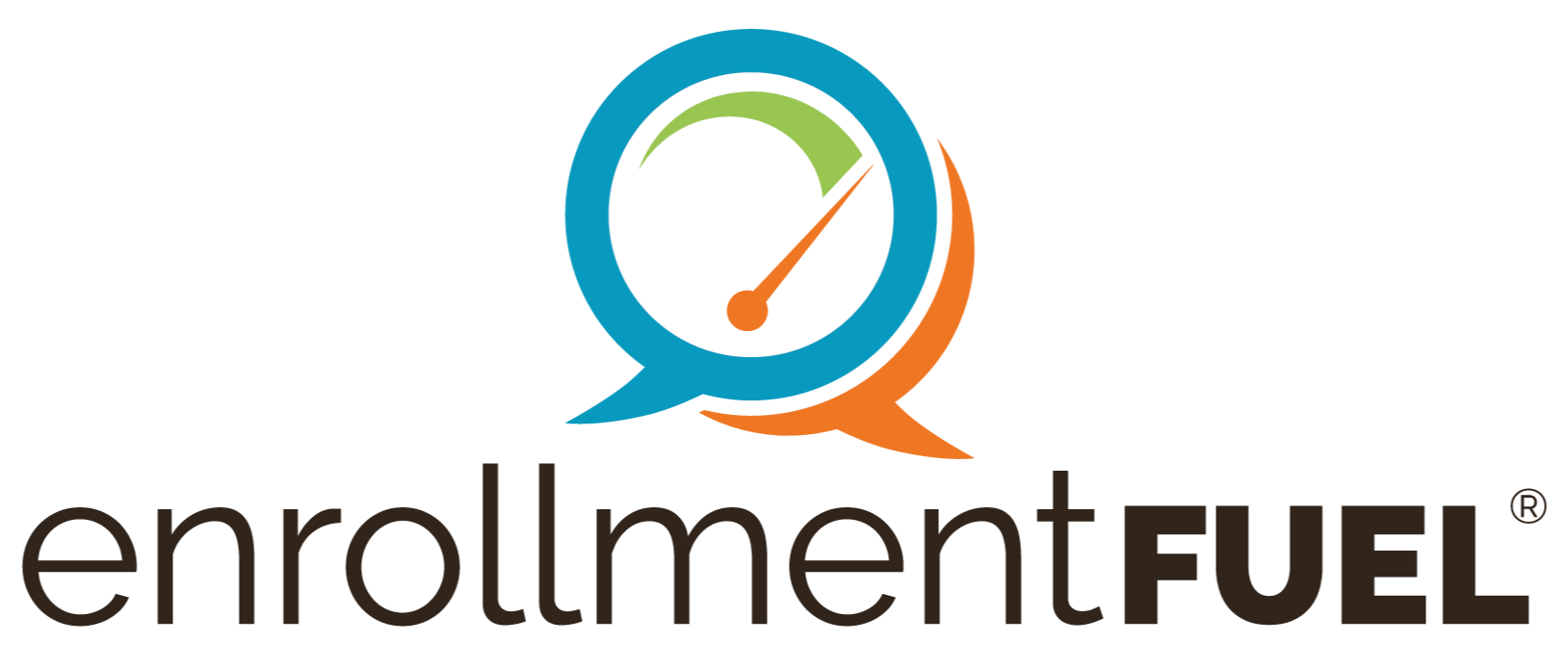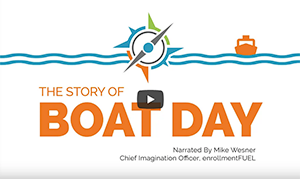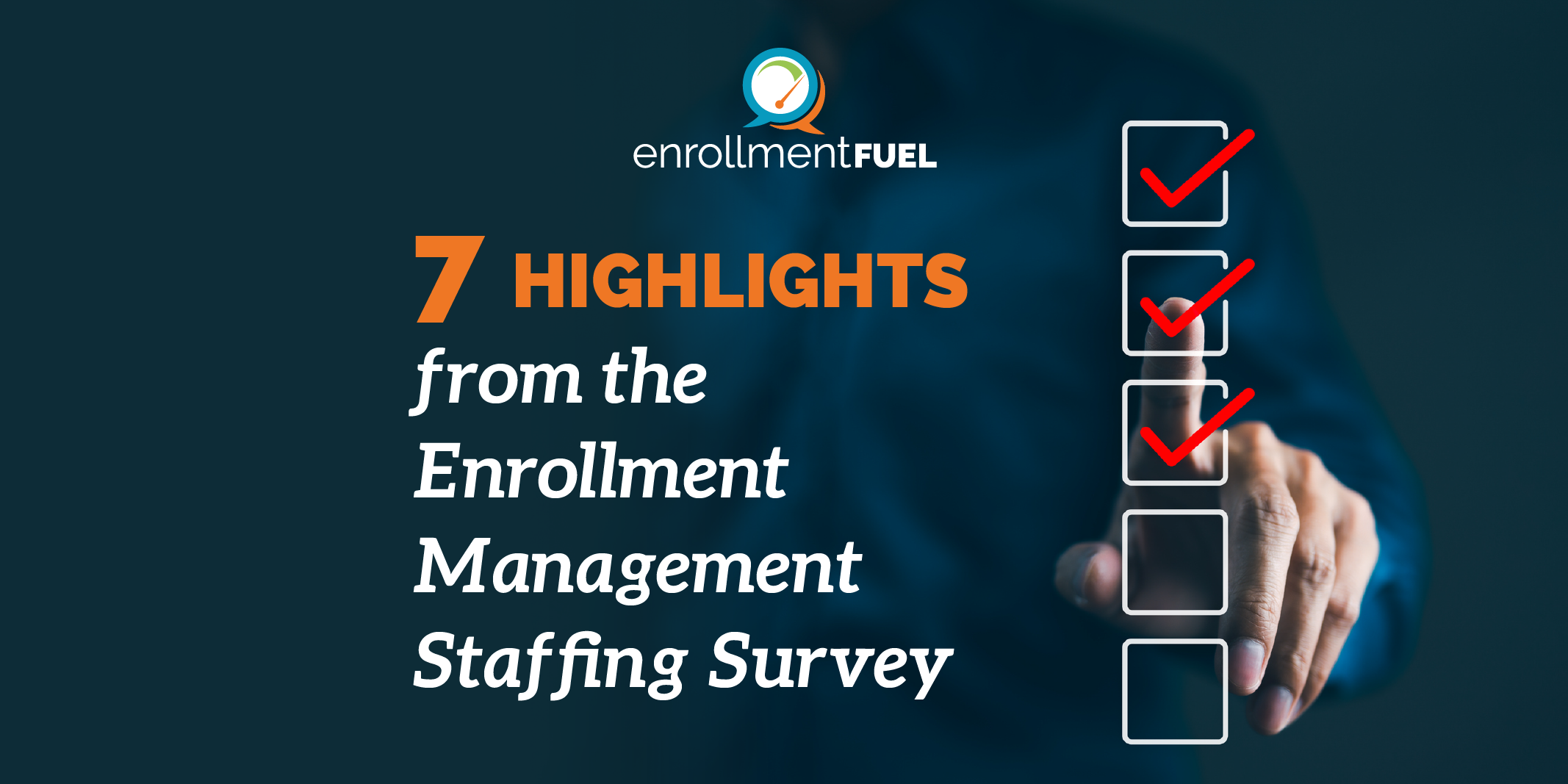A 2006 National Center for Educational Accountability [1] study showed that Advanced Placement (AP) students are more likely to have higher grade point averages and to graduate on time, than their counterparts who don’t take AP classes. This holds true across races, gender, and social-economic statuses.
Given this data and your enrollment goals, consider this: are you recruiting to enroll as many students as possible with college credit? Or, are you seeking to enroll as many students as possible that can handle the academic rigor of college?
It’s a good question to consider because even when students don’t present an AP score that is eligible for college credit, they generally perform at a higher level. Since they have been exposed to rigorous work, their transition to college is often easier than their peers who have not had any exposure to advanced courses.
Using a multi-year strategy built around the goal of communicating with qualified students, how can you access talented students before they have PSAT, SAT or ACT scores? Consider the following:
- More than 1.17 million students from the class of 2017 took AP exams [2]
- More than thirty-eight different exams are offered in seven subject categories [3]
- AP exams are most often available to 11th and 12th graders, and occasionally to 10th graders [4]
- Students who perform well on AP STEM exams tend to graduate with a STEM degree more often than those who did not take the exam [5]
- High school AP students have a higher college graduation rate than non-AP students [6]
- According to a recent USA Today, females, minority, first-generation and rural students saw dramatic increases in AP Computer Science exams [7]
- Since 2007, AP has consistently grown in the majority of participating states [8]
While there are states that have disproportionate numbers of SAT or ACT students, almost all states include Advanced Placement as options for courses – which serves as an indicator of access to rigorous preparation. Students frequently take an AP course before they take any college entrance assessments. In 2017, more than 2.7 million students took more than 4.9 million AP exams [9]. While not all will opt-in to Student Search marketing, those that do present a sizeable pool of students who have been exposed to rigorous coursework.
To find more students who will persist (and ultimately graduate) consider searching for AP students with non-credit eligible scores. These students are not typically recruited, but here’s why they should be:
- Academically talented first-generation, minority and/or rural students
- Students interested in STEM fields
- Women and underrepresented minorities in Computer Science
- Students with interest in languages
- Even if they don’t major in the discipline, AP students take more upper-level courses in their chosen field
AP students typically have demonstrated a deeper interest in a content area. Communication outreach should recognize the different qualities these students bring and be tailored, accordingly. Think of creative methods to involve the rest of the campus to help recruit these students—they could be the subset that pushes you and your team over the goal.
[1] Dougherty, C., Mellor, L., & Jian, S. (2006). The Relationship between Advanced Placement and College Graduation. National Center for Educational Accountability. Retrieved from https://files.eric.ed.gov/fulltext/ED519365.pdf
[2] AP Program Results: Class of 2017 (Rep.). (2018). New York City, NY: CollegeBoard. Retrieved from https://reports.collegeboard.org/ap-program-results/class-2017-data
[3] AP Courses. (n.d.). Retrieved from https://apstudent.collegeboard.org/apcours
[4] Policy: Appropriate grade levels for AP courses. (n.d.). Retrieved from https://secure-media.collegeboard.org/apc/Appropriate-Grade-Levels-for-AP-Courses.pdf
[5] Smith, K., Jagesic, S., Wyatt, J., & Ewing, M. (2018). AP STEM Participation and Postsecondary STEM Outcomes Focus on Underrepresented Minority, First-Generation, and Female Students. Retrieved from https://files.eric.ed.gov/fulltext/ED581514.pdf (ERIC Document Reproduction Service)
[6] Dougherty, C., Mellor, L., & Jian, S. (2006). The Relationship between Advanced Placement and College Graduation. National Center for Educational Accountability. Retrieved from https://files.eric.ed.gov/fulltext/ED519365.pdf
[7] Suppe, R. (2018, August 27). Female, minority students took AP computer science in record numbers. Retrieved from https://www.usatoday.com/story/tech/news/2018/08/27/female-minority-students-took-ap-computer-science-record-numbers/1079699002/
[8] AP Program Results: Class of 2017 (Rep.). (2018). New York City, NY: CollegeBoard. Retrieved from https://reports.collegeboard.org/ap-program-results/class-2017-data
[9] Annual AP Program Participation 1956-2017(p. 2, Rep.). (2018). New York City, NY: College Board. Retrieved from https://secure-media.collegeboard.org/digitalServices/pdf/research/2017/2017-Annual-Participation.pdf[/vc_column_text][/vc_column][/vc_row]
Related Articles
Video Production for Enrollment Management
If you’re like me, the year 2000 feels like a long time ago, and a much different time. When the 21...
Name Buys During the Pandemic
Picture this…America…2020…
COVID hits. Standardized testing dates have been cancelled around the...
Transfer Students - Where Art Thou?
The community college system across the United States has approximately 2.1 million full-time...




